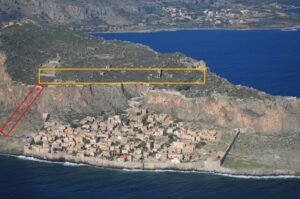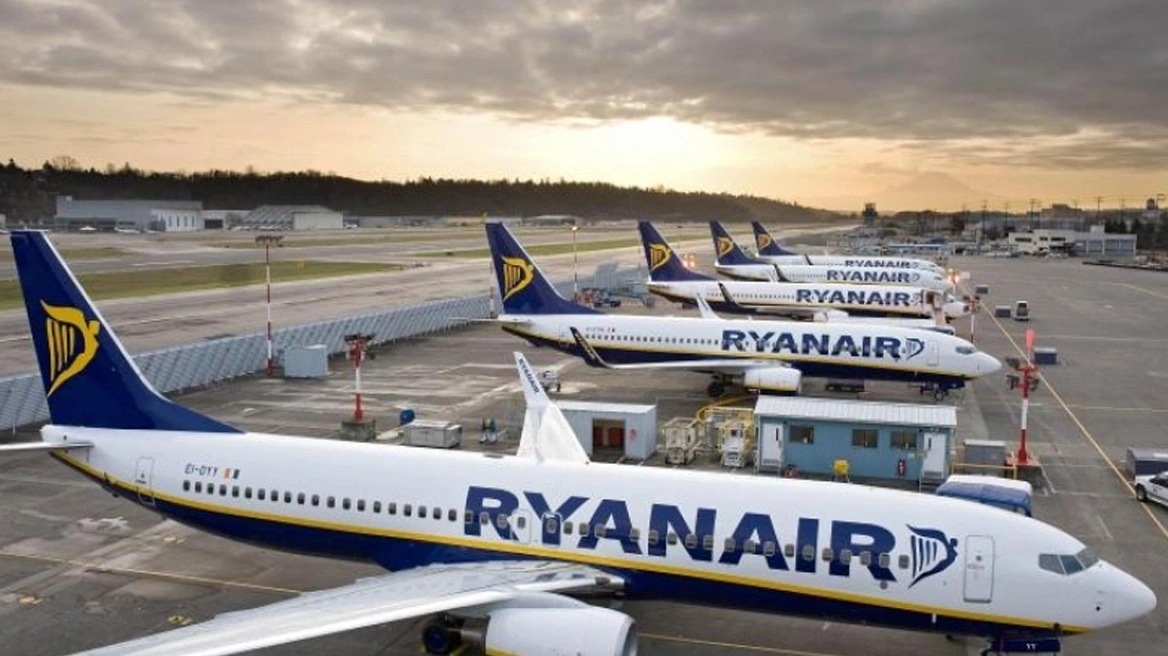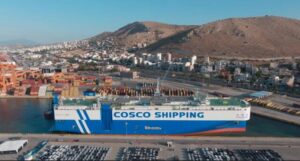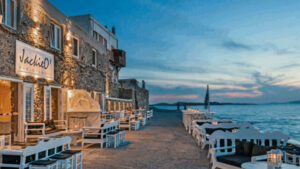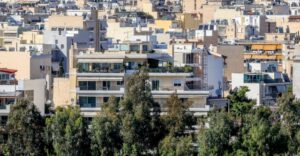As part of the projects implemented by the Ministry of Culture for the universal accessibility of cultural infrastructures, the corresponding project in Monemvasia is underway, with the creation of a network of tour routes in the Upper Town, combined with the installation of a lift in the Castle for disabled persons and people with disabilities. The project, with a total budget of 6,800,360 euros, is financed by the Ministry of Culture, with resources from the Recovery Fund. It includes the creation of a network of walking routes, the connection of the network with the terminal area of the passenger train and with visited monuments of the Upper Town. At the same time, the procedures for the installation of the passenger train are proceeding, so that the Upper Town becomes universally accessible, through a Programmatic Contract for Cultural Development that the Ministry of Culture has concluded with the Peloponnese Region, the Municipality of Monemvasia and the Development Organization of OTA “Parnon”.


The Environmental Impact Study for the installation of the aerial passenger station received the unanimous positive opinion of the Central Archaeological Council. During the preparation of the EIA, parameters such as safety of movement, environmental footprint on the overall landscape, cost of construction and operation were taken into account. The project is located entirely within a NATURA 2000 protected area and the archaeological environment of the area is also recorded in the EIA. The EIA proposes ways and methods to minimise and remove any impacts of the project construction by introducing environmental conditions. The approved proposal ensures the construction and operation of the cable car, the most appropriate solution in terms of construction and operation, serving the Ministry of Culture’s strategy of access to culture for all.
Minister of Culture Lina Mendoni, said: “Ano Polis is an open archaeological site, which includes the remains of houses, public buildings, temples, baths and paths, most of which are in a dilapidated state. In the framework of the 2007-2013 NSRF, apart from the restoration of the famous Byzantine Church of Agia Sophia, works have been carried out in Ano Poli, including the restoration of the wider area and the central gate, including two houses and a network of cobbled streets. This is an interesting monumental unit, which is integrated with the Lower Town through the work of shaping the network of routes and connecting it to the lift, offering the visitor the possibility of reading the organization and operation of the city as a single entity. Our aim is to improve the quality and safety of the tour of the archaeological site and to create the necessary stopping and resting places for visitors. Traffic in the Upper Town is organized in a modern way that allows unobstructed navigation for all. Culture, as a social good, must be accessible to all, whether they are older people, people with disabilities or people with reduced mobility, so that they can enjoy the cultural good on an equal footing. This is our priority. The necessary interventions are approached on the basis of a sustainable strategy for the development of the monumental and residential complex as, according to the Environmental Impact Study, significant benefits are expected from the operation of the project, such as stimulating employment, strengthening the local economy, facilitating the restoration work in the Upper Town and managing emergency needs.”
The survey and mapping carried out as part of the study confirmed the existence of three main routes in the intervention area that run parallel to the elevation curves of the terrain, crossing and connecting to secondary routes to visit the monuments of the Upper Town. Route A is the easternmost of the three and is at the lowest elevation. It starts from the ‘Tapia Kritikos’ and the ‘House of Kritikos’, passes through the western edge of the Central Square of the Upper Town and ends at the Church of Agia Sophia. The route coincides with the perimeter of the eastern wall of the Upper Town and is the most important traffic axis. It is reinforced by the connection between the Lower Town and the Upper Town via the passageway, which has already been approved. This route connects the Central Square (today’s entrance to the Upper Town) with the Church of St Sophia. Route B is located to the west of Route A, starting and ending at the same points. This route is characterised by continuous high gradients. Route C is the route with the highest altitude. It meets the Ottoman bath complex and ends at the Church of Agia Sophia. This route has steep and continuous gradients, as well as difficult sections due to its rocky nature.
The priority of the works is the safety of visitors and the preservation and enhancement of the building remains, as well as the original traffic carvings of the Upper Town. Work includes smoothing out steeply sloped areas, completing and constructing parapets and railings, paving the trails, cleaning, creating staging areas to accommodate visitor traffic, and placing informational signs in appropriately designed areas.
At “Tapia Kritiko” a reception, stopping and information plateau for visitors is created. At the same time, the monuments of the area, such as the bastion, the so-called “Cretan house” and the Ottoman fountain, will be highlighted. At the same time, the plateau is the starting point of the disabled route to the Central Square. In the area to the west of the Church of Agia Sophia, which coincides with the end of route C, the steep rocky relief acts as an informal ‘ladder’ to and from the Church of Agia Sophia. The point is reinforced as an ‘ascent-descent ladder’, but in a structured and functional way that restores the smooth circulation of visitors. At the western end of the rocky climb is the Ottoman bath complex, while seating areas are placed in the middle and at the end of the climb for visitors to rest and enjoy views of the Lower Town and the wider area.
The design of any facilities ensures that they are gently integrated into the site. The building that will host the reception area and the starting station of the passenger train remains in close proximity to the gate of the Kato Polis, where one starts the tour of Monemvasia. The location of the finishing station is placed at the edge of the wall of the Upper Town. One operator is required at each of the two stations to operate the passenger ferry. Each cabin has a capacity of 15 people or two disabled carriages or an ambulance stretcher with two paramedics. The platform at the terminus station is used for boarding and alighting from and to the cabins. At the same time, it serves as a balcony offering a unique panoramic view experience to visitors. The choice of the location of the starting and arrival facilities was derived from the analysis of the terrain, the result of a special geotechnical – rock mechanics study.
Ask me anything
Explore related questions
